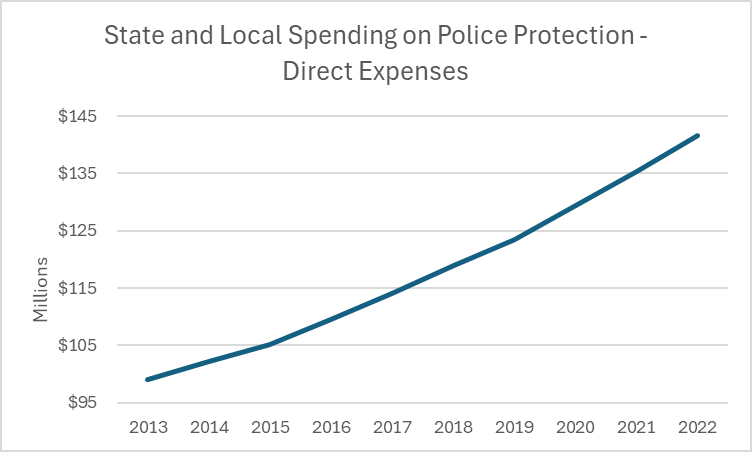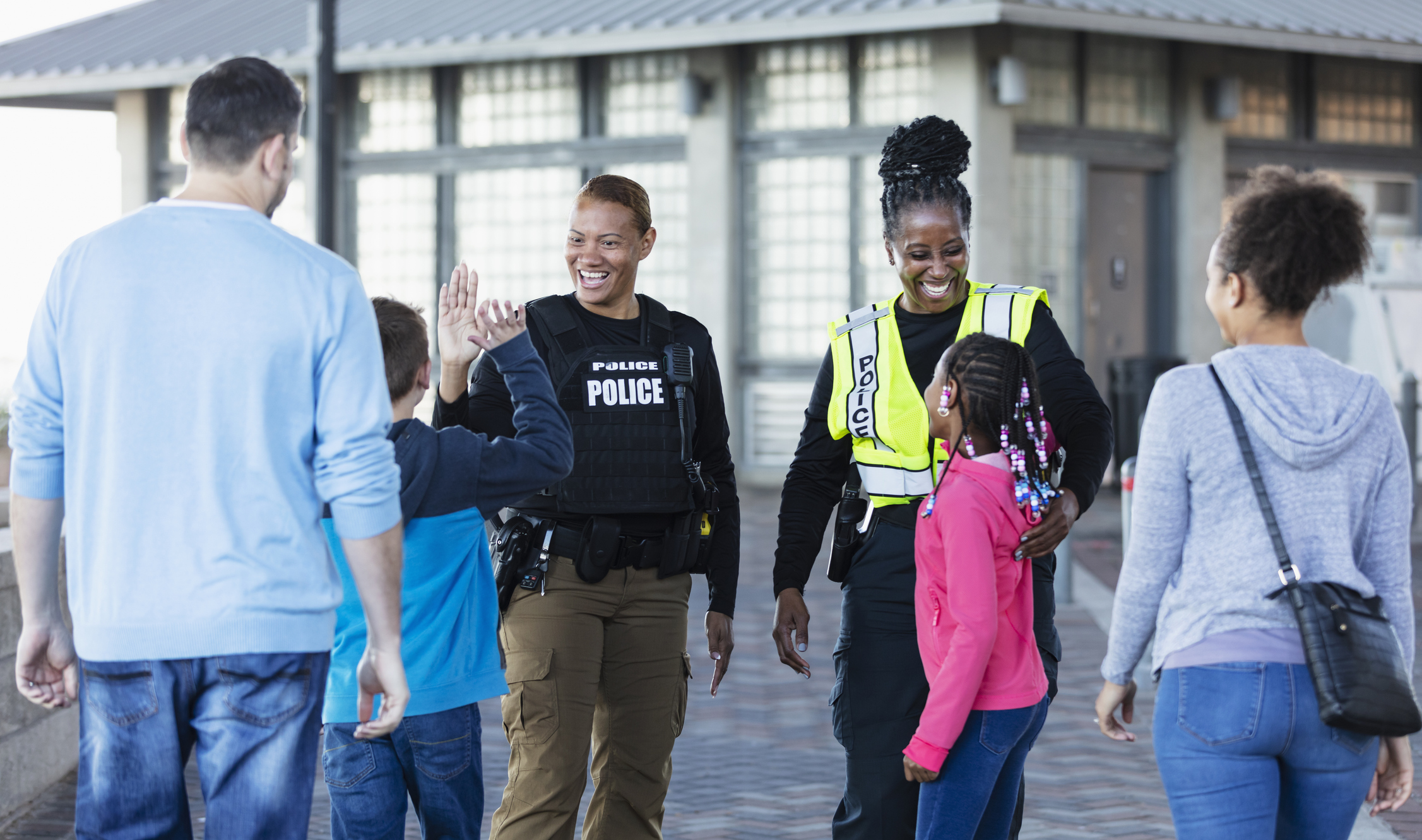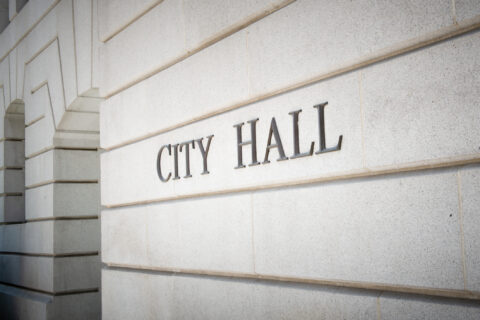The National League of Cities (NLC) applauds the emphasis placed on the need to support local public safety programs by both the Republican and Democratic party platforms in the 2024 presidential election.
We know that public safety is one of the top concerns for voters this election, and all the candidates are making it one of their top priorities.
This recognition by the 2024 presidential and congressional candidates underscores the critical role that local governments play in ensuring the safety and security of their communities. According to the U.S. Census Bureau’s Annual Survey of State and Local Government Finances, over the past decade, local government spending on policing in the US has shown a consistent upward trend. The data indicates a gradual increase in spending from 95 billion dollars in 2013 to 140 billion dollars in 2022.
This substantial investment underscores the dedication of local governments to enhance public safety infrastructure, personnel and community-based initiatives.

Local Government Investment in Public Safety
Cities across the United States are making considerable progress in their efforts to create safer communities.
Innovation and Training
- Los Angeles, California has invested in advanced technology to improve response times and crime-solving capabilities. The integration of predictive policing algorithms and real-time data analysis has led to a noticeable reduction in crime rates.
- Additionally, Austin, Texas has focused on mental health and crisis intervention training for its police force. By equipping officers with the skills to handle mental health crises effectively, the city has seen a decrease in violent confrontations and improved outcomes for individuals in distress.
- Seattle, Washington is investing in programs to prioritize the use of non-lethal force and de-escalation techniques in its policing practices as well. Extensive training programs for officers have contributed to a decline in deadly force and enhanced community safety.
Effective and Inclusive Community Engagement
- New York City has implemented comprehensive community policing programs that foster trust and collaboration between law enforcement and residents.
- Newark, New Jersey has made significant strides in reducing violent crime through community engagement and innovative policing strategies. The city’s use of data analysis to deploy resources more effectively is complemented by strong community outreach programs that build trust and cooperation between residents and law enforcement.
- Additionally, Baltimore, Maryland has focused on comprehensive reforms within its police department, emphasizing transparency, accountability and community partnership.
Well-Being and Prevention-Focused Strategies
- Kansas City, Missouri is implementing a holistic approach to public safety that includes violence interruption programs and partnerships with local organizations to address the root causes of crime. The “No Violence Alliance” (NoVA) initiative, which combines law enforcement efforts with social services, has led to a decrease in violent crime and improved community relations.
- Eugene, Oregon established the Crisis Assistance Helping Out On The Streets (CAHOOTS) program to create a mobile crisis intervention unit that responds to non-violent situations involving mental health, substance abuse and homelessness. This initiative has effectively diverted many calls away from the police, reducing unnecessary confrontations and providing appropriate care.
- Huntington, West Virginia has tackled the opioid crisis head-on with the creation of the Quick Response Team (QRT), which pairs law enforcement with medical professionals and counselors to follow up with overdose survivors. This approach has helped reduce overdose deaths and connect individuals with treatment and support services.
- Dubuque, Iowa has implemented a comprehensive crime prevention strategy that includes neighborhood revitalization, community policing and youth engagement programs. The “Safe Community Task Force” has worked to address underlying social issues contributing to crime, resulting in a safer community overall.
- Rockford, Illinois’s approach to public safety includes the “Rockford Youth Violence Prevention Program,” which focuses on mentoring, job training, and educational support for at-risk youth. This initiative has contributed to a reduction in youth violence and crime in the city.
These examples highlight how diverse strategies and targeted investments can create safer, more resilient communities across the nation.
Reimagining Public Safety Impact Updates
Learn more about NLC’s work supporting city leaders in ensuring the safety of all residents, including case studies with more in-depth examples, in NLC’s Resource Library.
Building a Holistic Approach to Improving Public Safety
While policing continues to be a major investment for cities across America, local leaders are working to create a more holistic approach to public safety. City leaders have found that policing alone is insufficient to address the myriad public safety and health challenges cities face. Creating “safe communities” is intrinsically linked to the broader context of health, housing, economic development, job security and infrastructure. These elements are interdependent and collectively essential for fostering a safe, secure and thriving community.

To truly address the underlying causes of violence in communities, local governments need additional federal support to comprehensively enhance their public health and safety programs. This support includes a commitment by our federal leaders to increase investment in mental health services, substance abuse treatment and community violence intervention programs to prevent issues from escalating to the point where police intervention becomes necessary.
Additionally, increasing the availability of affordable housing is fundamental to public safety, as safe, stable housing can significantly reduce homelessness and its associated risks. Furthermore, strengthening local economic opportunities is crucial for building safer communities. By supporting job training and employment opportunities, the federal government can help city residents secure stable, well-paying jobs, thereby reducing crime rates and improving overall quality of life.
Meanwhile, well-maintained infrastructure, including transportation, utilities and public spaces, underpins all these efforts by facilitating accessibility, safety and efficient service delivery. To achieve any one of these goals, there must be a concerted effort to address all of them simultaneously, as they support and enhance one another, creating a safe and prosperous community.
The continued focus on local public safety by the 2024 presidential and congressional candidates is a promising development. It aligns with cities’ ongoing efforts to innovate and improve their public safety strategies, including policing. As local governments continue to invest in public safety, the support from national leadership will be crucial in sustaining and amplifying these initiatives.
The NLC is committed to working with both parties’ leadership to build safe and healthy communities. As local leaders continue to serve on the front lines addressing our nation’s public health and safety, having a strong federal partner in this work is essential.









